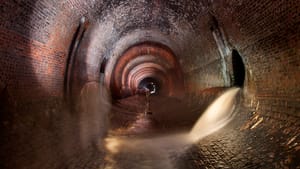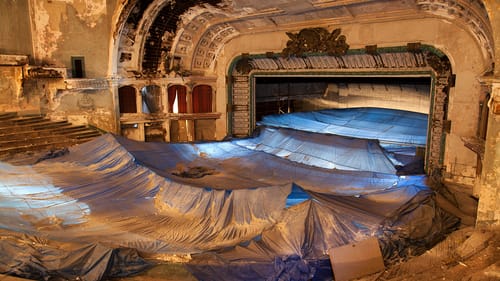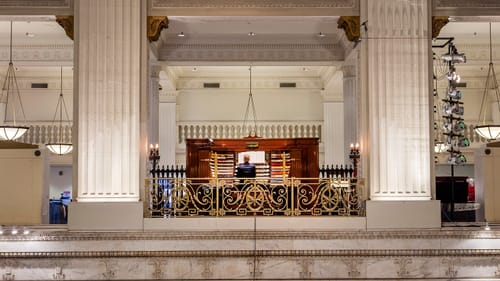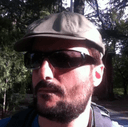Stay in the Loop
BSR publishes on a weekly schedule, with an email newsletter every Wednesday and Thursday morning. There’s no paywall, and subscribing is always free.
The city you don't see
'Philadelphia: Finding the Hidden City,' by Joseph E.B. Elliot, Nathaniel Popkin, and Peter Woodall

The search for the city’s 19th and early 20th centuries among modern-day ruins rests at the heart of Philadelphia: Finding the Hidden City. Written by Joseph E.B. Elliott, Nathaniel Popkin, and Peter Woodall, the book is a paean to Philadelphia as a “city of infinite layers,” a metropolis that once produced more wealth than any other place on earth.
Before its demolition last year, the Royal Theater was one of Philadelphia’s many abandoned buildings, entombing an earlier age as it crumbled into oblivion on South Street. Built in 1920 as a center for African-American cultural expression, the Royal billed itself as “America’s Finest Colored Photoplay House” and was the only cinema in Philadelphia that black patrons could safely visit. Today, all that remains is a fenced-off perimeter of broken brick littered over the dirt and a façade with three arches propped up by I-beams.
"Workshop of the world"
For Philadelphians, encounters with such urban ruins are woven into the fabric of everyday life. Remains of the city’s industrial era lie strewn across its neighborhoods like pottery shards. Stone and iron bridgeheads leer from the Schuylkill’s banks. Trolley tracks peek out from asphalt and vanish before the end of the block. Rusted coal conveyors, vacant behemoths of generator stations, factories, gantry cranes, mills and warehouses — all of these sooty survivors point to Philadelphia’s earlier heyday, when it was dubbed the “workshop of the world.”
Between the Civil War and Great Depression, the Quaker City — with its deepwater port and abundance of anthracite coal — thrummed with manufacturing activity. Over 8,000 factories and workshops churned out everything from ships, locomotives, and trolleys to hats, linens, hosiery, and fine lace.
Textile factories and tanneries dominated Kensington. In the late 1880s, between Vine and South Streets more than 4,000 manufacturing establishments produced clothing, shoes, furniture, gas works, silk, and confectionery.
As the book notes, the long process of deindustrialization started in the 1920s. Eventually white flight and suburbanization, which began in the 1950s, drained the city of wealth. Most of Philadelphia’s factories and mills closed their doors; a long period of poverty and dissolution ensued.

Yet the very economic conditions that brought Philadelphia’s industrial era to its grinding halt preserved its remains. Plummeting real estate prices during the last century helped seal the material culture of the city’s glory days, protecting it from demolition.
French-influenced mansions, motion-picture theaters, churches and synagogues, prisons, hospitals, factories, railroad lines, and train depots were allowed to linger as ruins or repurposed for the needs of new tenants.
Looking behind the layers
For the authors, the decaying grandeur of Philadelphia’s ruins and renovated buildings is the visible entry point into what they term the “hidden city,” a bygone era of excess and overabundance lurking behind fresh stucco or the cracking facades of our modern-day streets.
Arguing that Philadelphia’s rebranding as a “colonial-age” city occurred at the expense of its “long 19th century,” the book takes a remarkable journey through the discernable markers of the hidden city. Over 100 photographs by Elliott and evocative descriptions by Popkin and Woodall prise off layers of time to reveal the histories and interiors of Philadelphia’s antiquated edifices.
They highlight buildings like Girard College, the Church of the Gesù, and the Divine Lorraine Hotel. The nightmarish corridors of notorious Holmesburg Prison and the gorgeous Wanamaker organ — the largest playing pipe organ in the world, tucked away inside Macy’s — are also featured. Haunting sites like the postapocalyptic turbine halls of Richmond Generating Station and the desolate concrete-lined sewers, railroad tunnels, and subway stations where no one enters or exits also make appearances.

Take Elliot’s image of the Royal Theater’s cavernous interior illuminated by flood lamps. The theater’s surviving stage, edged by two crumbling Doric columns, is covered in graffiti (“The Winged Lion Lives”). Much of the decorative ceiling has peeled off from moisture. Debris lies strewn over the barren floor that once held more than 1,100 guests.
Gone are the niches, the floral wreaths painted over absent plaster, the pilasters, the chandelier. All that is left is exposed brick. In the foreground a metal folding chair, a table strewn with tools, and a red fire extinguisher form an inanimate audience before the broken stage. All that remains of the Royal’s interior now is Elliot’s photograph, which is itself like a ruin, a fossilized vestige of a moment gone.
“Inside the stillness of an urban ruin . . . consciousness of eternal time mingles with the awareness of finite mortality,” write the authors. Their book is a timely manifesto of urban exploration, a fascinating patchwork of secret histories, and a riveting formula for distilling Ozymandian enchantment from industrial rubble and rust.
They invite us to discover a new way of seeing the city as a palimpsest, one in which communion with the obsolete becomes a means of finding what is truly intimate in ourselves.
To learn more about the co-authors’ Hidden City Philadelphia project and tours, visit their website.
What, When, Where
Philadelphia: Finding the Hidden City. By Joseph E.B. Elliott, Nathaniel Popkin, and Peter Woodall. Temple University Press, 2017. 200 pages, hardcover; $33.48. Click here.
Sign up for our newsletter
All of the week's new articles, all in one place. Sign up for the free weekly BSR newsletters, and don't miss a conversation.

 Lev Feigin
Lev Feigin